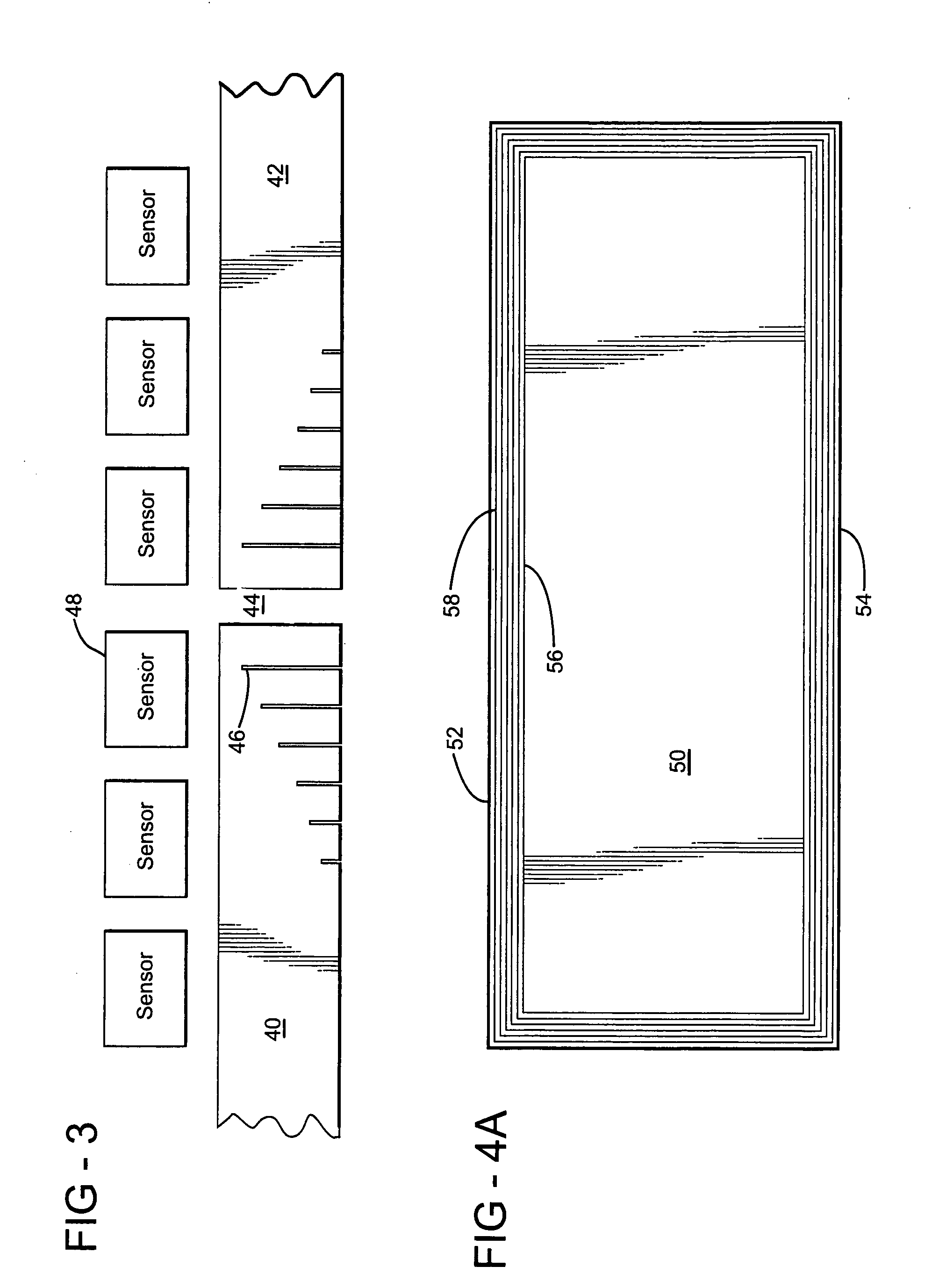Edge effects treatment for crystals
a technology of edge effects and crystals, applied in the field of reduction or elimination of edge effects in optical elements, can solve the problems of serious reduction in the ability to accurately determine the position of such events, edge effects, and the reduction of the measured positional accuracy of imaging data, so as to reduce the edge effect and the loss of positional accuracy
- Summary
- Abstract
- Description
- Claims
- Application Information
AI Technical Summary
Benefits of technology
Problems solved by technology
Method used
Image
Examples
Embodiment Construction
[0034]In examples discussed below, the term “crystal” is used for convenience to refer to a scintillation material. However, examples discussed here apply equally to non-crystalline scintillators. Also, in examples discussed below, light guides are provided by grooves cut into one or more surface of the crystal (or associated window). As discussed in more detail below, other forms of light guide can also be used, for example, reflective films.
[0035]FIG. 1 shows a portion of a first crystal 10, a portion of a second crystal 12, a crystal gap 14 between the two crystals, a plurality of sensors such as sensor 16, a plurality of grooves in the light emitting face of each crystal, such as grooves 18a–18d, a first crystal edge 20, and a second crystal edge 22.
[0036]As drawn, the lower surface of the crystal 10 is the radiation receiving face, and the upper surface of the crystal is the light emitting face. This convention will be followed (for convenience only) through the various figure ...
PUM
 Login to View More
Login to View More Abstract
Description
Claims
Application Information
 Login to View More
Login to View More - R&D
- Intellectual Property
- Life Sciences
- Materials
- Tech Scout
- Unparalleled Data Quality
- Higher Quality Content
- 60% Fewer Hallucinations
Browse by: Latest US Patents, China's latest patents, Technical Efficacy Thesaurus, Application Domain, Technology Topic, Popular Technical Reports.
© 2025 PatSnap. All rights reserved.Legal|Privacy policy|Modern Slavery Act Transparency Statement|Sitemap|About US| Contact US: help@patsnap.com



